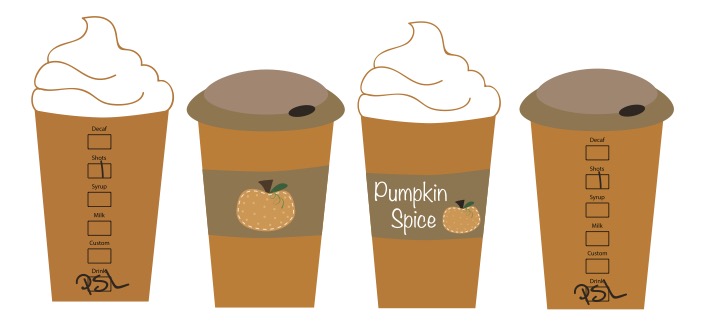the
Practical advice on building strategy, reflections on marketing trends and more.
Blog

For everything there is a season. And this season is for pumpkin spice. Every August to November, consumers go wild for it. While the flavor has been around for 200+ years, pumpkin spice didn’t become a global obsession until Starbucks introduced the PSL (the pumpkin spice latte) in 2003. The PSL is still the most popular seasonal beverage on Starbucks’ menu.
The coffee giant’s seasonal beverages (like the PSL) are just one example of brands using seasonal marketing to draw in new customers or invite back customers for additional engagement. At its worst, seasonal marketing can feel gimmicky or forced. But at its best, seasonal marketing can turn campaigns into traditions in their own right.
So, what can brands learn from pumpkin spice when it comes to seasonal marketing?
What Is Seasonal Marketing?
Simply put, seasonal marketing is the act of pushing certain products or messaging during certain times of the year, often to align with holidays, weather or other season-specific occurrences.
Seasonal marketing is especially popular among retail and food brands who sell products associated with traditions or celebrations that happen once per year. Think Christmas-themed home decor, Halloween candy, back-to-school supplies, etc. But it can be an effective tactic for other brands, too.
Why Seasonal Marketing Works
Like any other marketing strategy, seasonal marketing works when it has a clear purpose and message, speaks directly to its target audience and has a strong call to action. But what is it about seasonal marketing specifically that seems to work for brands? Good seasonal marketing campaigns work because they:
- Emphasize scarcity (or perceived scarcity): The number one reason seasonal marketing works is that it’s limited in nature. Season products could be “for one month only” or “limited edition” and brand experiences might only happen at a particular time of year. Scarcity creates urgency and draws consumer’s attention.
- Meet people where they are: Seasonal marketing taps into what consumers are already thinking about or doing and aligns with customers’ purchasing habits at that time.
- Use organic opportunities to share brand messages: The great thing about that change of weather or a national holiday is their ubiquitousness – it doesn’t look forced to acknowledge them. This provides an opportunity for more organic-feeling ads or even user-generated campaigns.
- Builds engagement: When done right, seasonal marketing campaigns focus more on delighting consumers than selling to them, and the engagement that is created can sustain interest in the brand beyond the season.
The Secret Behind Pumpkin Spice
Starbucks’ pumpkin spice latte hits on all of those key elements. Only offered a few months each year, its flavor aligns with purchasing habits for fall (all things pumpkin and warm), it’s now largely promoted through user generated content and media coverage, and, of course, it builds engagement among its fans. After Starbucks’ early success with the flavor, it exploded, becoming the Fall edition of food and beverage brands all over. And it (mostly) works.
That’s because pumpkin spice has one other factor going in its favor. In 2021, USA Today quoted researchers at John Hopkins University who had discovered that the smell of pumpkin spice had an especially strong effect on consumers. “The smell of this autumn flavor often triggers familiar, cozy memories — creating a national nostalgia and increased desire to reunite with the upcoming season,” the article reads.
Nostalgia is a powerful marketing tool, perhaps even more so than holiday cheer. While your brand might not smell like childhood memories, consider other ways you can tap into people’s sentimental side in your seasonal marketing campaign. Combined with the other top four elements of a successful seasonal campaign — and you may just have the next PSL on your hands.
Pumpkin Spice and Seasonal Marketing
August 31, 2022
Hi! I'm Colleen.
I’m a strategic marketing professional with over a decade of experience and a passion for mission-based brands.
full bio
founder
marketing consultant communication expert
founder | marketing consultant | communication expert
I’m also a trained writer who loves teaching people and organizations how to improve their communication to achieve their goals. Part marketing leader, part communications instructor, 100% focused on YOUR growth.